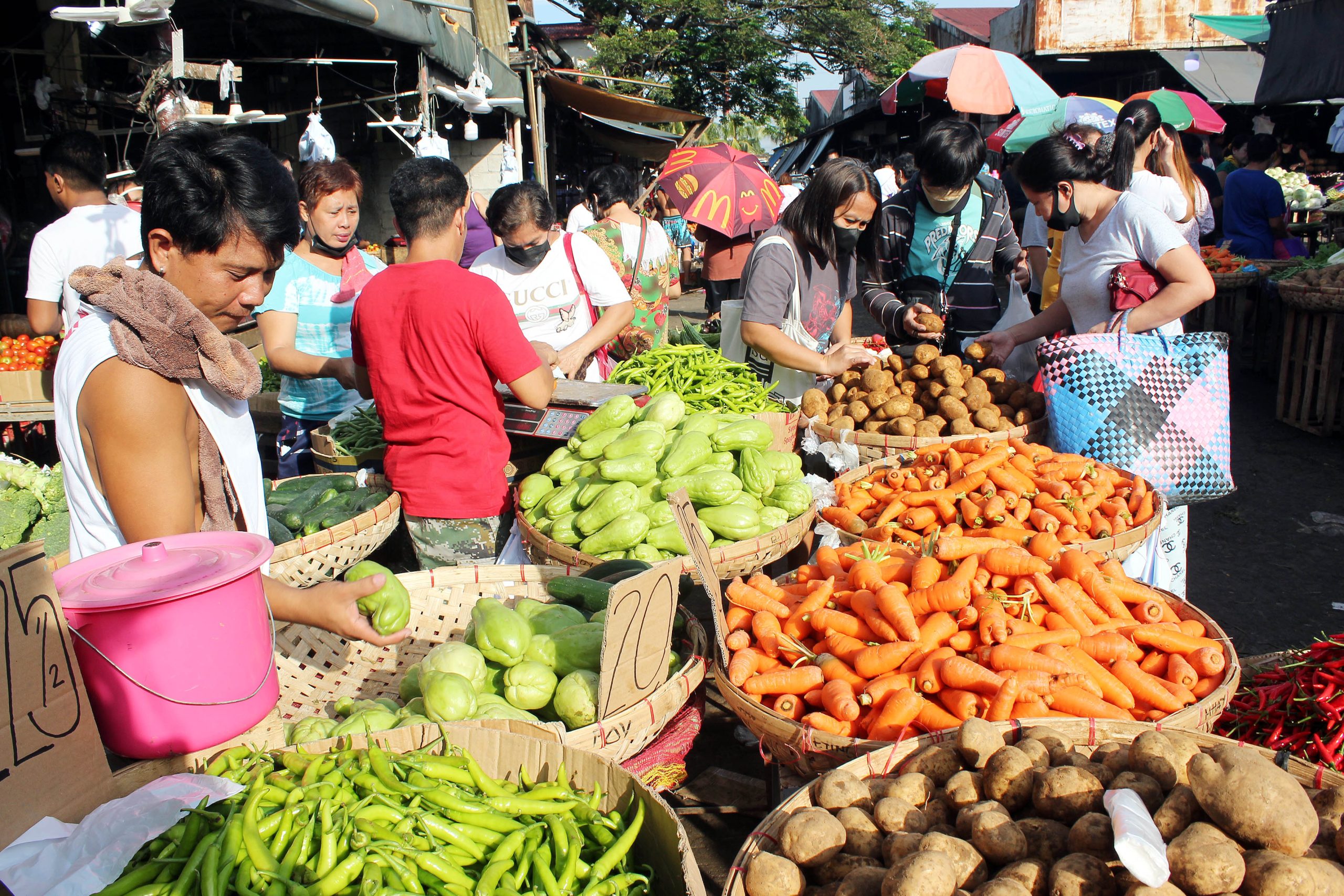News
Gov’t undertaking measures to manage poverty: NEDA

FILE: Customers buy potatoes, sayote, and other vegetables at the Kadiwa market in the City of Dasmarinas, Cavite. (PNA photo by Gil Calinga)
MANILA – The Marcos administration is implementing measures to revitalize the economy and help lift more Filipinos out of poverty amid a recent survey that said about 49 percent of Filipino families see themselves as poor.
Socioeconomic Planning Secretary Arsenio Balisacan, also director general of the National Economic and Development Authority (NEDA), said Saturday there was a rise in inflation at the time the Social Weather Stations (SWS) surveyed 1,500 respondents on September 29 to October 2, thus the rise by 1 percent from the previous poll.
About 29 percent placed themselves at the “borderline” dividing the poor and not poor, while 21 percent considered themselves as not poor, according to the survey.
“(Results of the SWS survey are) expected, given the acceleration of inflation, particularly in food and transport, during the period,” Balisacan said in a statement. “Note that inflation has been coming partly from external factors, including global supply disruptions caused by the Ukraine-Russia war.”
He added that poverty incidence could have been higher, had the government failed to further reopen the economy and distribute targeted subsidies to low-income households, public utility drivers, farmers, and fisherfolk.
Balisacan assured that the government is fast-tracking the distribution of cash aid to the poor and vulnerable sectors, and increasing the food supply in the country to give Filipinos a comfortable life.
“Moving forward, we need to speed up providing financial assistance to the poor (and) most vulnerable groups, implementing our food production enhancement programs, and executing timely food importation,” he said.
To manage economic risks and address inflation, Marcos met with his economic team on Tuesday to discuss the policy directions for the rest of 2022 until the first quarter of 2023.
In a Twitter post on Tuesday, the President allayed concerns over soaring inflation, noting that the overall forecast for the Philippines is still “better than other countries”.
Also on Tuesday, Balisacan said the Philippines and its Asian neighbors are not spared from the inflation trends, pointing out that major economies of Southeast Asia, such as Thailand, Singapore, Indonesia, and Malaysia, have seen their inflation rates accelerate in the past year.
He said the economic team expects the rise in inflation to be temporary, as it is likely to slow down and return to the medium-term target of 2 percent to 4 percent.
The World Bank, in its October forecast, expected the Philippines to grow by 6.5 percent in 2022, second only to Vietnam among major Asean economies, and by 5.8 percent in 2023, faster than Indonesia, Malaysia, and Thailand
Based on the preliminary results of the Family Income and Expenditure Survey of the Philippine Statistics Authority released in August, poverty incidence among the population, defined as the proportion of Filipinos whose per capita income cannot sufficiently meet the individual basic food and non-food needs, was recorded at 18.1 percent.
It translates to about 19.99 million Filipinos who lived below the poverty threshold of about PHP12,030 per month for a family
of five.
Among families, about 3.5 million families, or 13.2 percent of the total population of about 110 million, were considered poor in 2021.





















